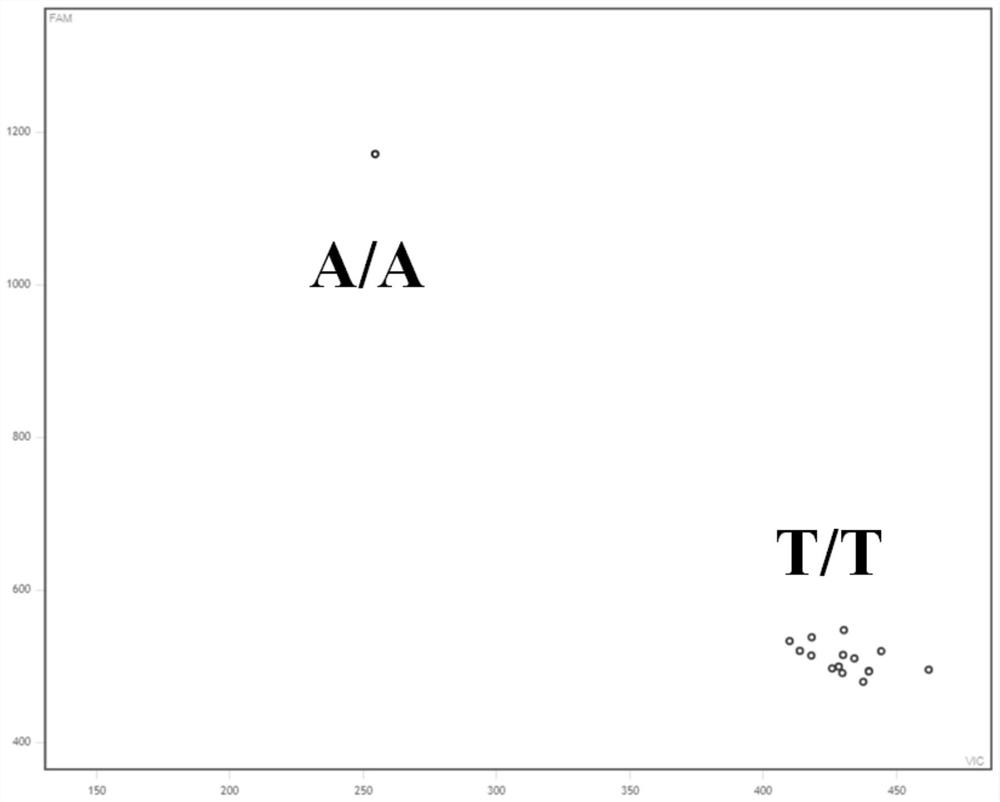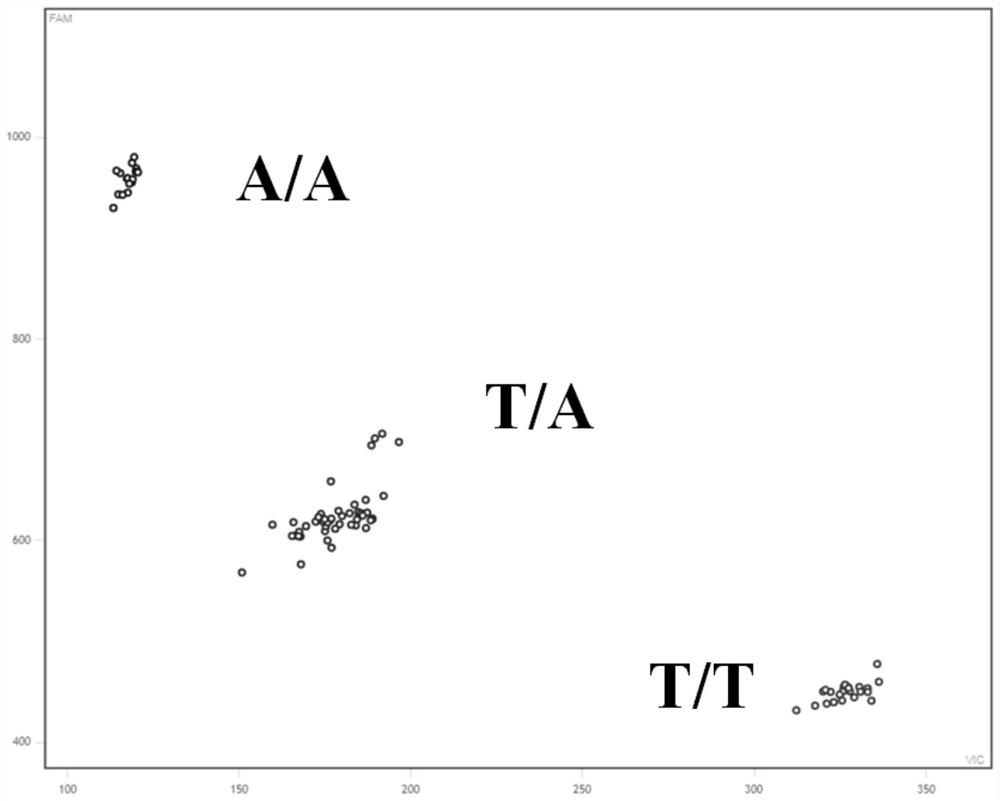Development and application of KASP molecular marker of rice blast resistance gene Pid3-A4
A rice blast disease and molecular marker technology, applied in the field of inductor rice breeding, can solve the problems of low detection efficiency, unsuitable high-throughput molecular detection platform, and aerosol pollution of the environment, so as to reduce pollution and reduce field planting. Scale, the effect of reducing breeding costs
- Summary
- Abstract
- Description
- Claims
- Application Information
AI Technical Summary
Problems solved by technology
Method used
Image
Examples
Embodiment 1
[0039] Example 1: Development of KASP marker closely linked to rice blast resistance gene Pid3-A4
[0040] The development process of the KASP marker closely linked to the rice blast resistance gene Pid3-A4 is as follows: figure 1shown. According to literature reports, a SNP locus [CA / AG] closely linked to the Pid3-A4 gene was obtained (the physical location of the rice reference genome is chromosome 6 10389855-10389856bp).
[0041] 1. Determination of primers:
[0042] The tightly linked SNP locus of Pid3-A4 gene was anchored at the 13058850bp position of rice chromosome 6 (Huang Weiheng, Huang Zhiyuan, Tang Li, et al. Development and application of specific InDel molecular markers for rice blast resistance Pid3 / Pid3-A4 gene[J] . Hybrid Rice, 2020(2):68-74.). The flanking sequence of closely linked SNP sites of Pid3-A4 gene was downloaded from NCBI database, and three sets of KASP primers were designed using Primer5.0 software. After detection by the ArrayTape platform of...
Embodiment 2
[0070] Example 2: Application of KASP marker closely linked to rice blast resistance gene Pid3-A4 in molecular marker-assisted selection of rice blast resistance plants
[0071] see image 3 , in order to detect the practicability of the KASP-A4 primer of the present invention, the F1 population was obtained by crossing the cultivated rice blast-resistant material 311100 with the rice blast-susceptible material Daohuaxiang No. 2, and 90 F2 natural segregating populations were produced by natural selfing of F1. For the segregating population Carry out KASP marker detection and disease-resistant phenotype verification (Table 2), the implementation method of marker detection and disease-resistant phenotype verification refers to Example 1. Through phenotypic and genotypic detection and analysis of segregating populations (e.g. image 3 shown), among the 90 isolated populations, only 6 genotypes were inconsistent with the phenotype results, and the consistency result between the ...
PUM
 Login to View More
Login to View More Abstract
Description
Claims
Application Information
 Login to View More
Login to View More - R&D
- Intellectual Property
- Life Sciences
- Materials
- Tech Scout
- Unparalleled Data Quality
- Higher Quality Content
- 60% Fewer Hallucinations
Browse by: Latest US Patents, China's latest patents, Technical Efficacy Thesaurus, Application Domain, Technology Topic, Popular Technical Reports.
© 2025 PatSnap. All rights reserved.Legal|Privacy policy|Modern Slavery Act Transparency Statement|Sitemap|About US| Contact US: help@patsnap.com



